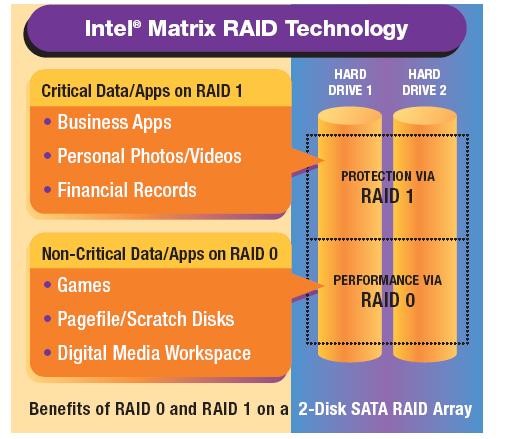Intel Stakes Its Vision of the PC Future with 775 Launch
Matrix RAID
This image is taken from an Intel presentation, but it perfectly shows how Matrix RAID works.
Matrix RAID is one of the most interesting storage subsystem features ever, as it finally fuses the performance advantage of a RAID 0 array with the data safety that only a RAID 1 array is able to provide - but with using two drives only! If you wanted to get a faster drive subsystem and simultaneously increase fault tolerance, you would have to go for a four-drive RAID 0+1 array, which of course is expensive.
Because of the flexibility of Intel's software layer, it is possible to install two different RAID arrays on the same set of hard drives. Choose a RAID 0 for performance reasons first for installing your operating system and applications, while a RAID 1 array could be used to store your vital data.
If one of the two hard drives (unfortunately, you cannot use three or four) should crash, the operating system running on the RAID 0 array would be lost forever, while the mirrored information of the RAID 1 array would remain available in order to restore important data.
Of course we also benchmarked all the different RAID configs possible (see the benchmark section later in the article).
Get Tom's Hardware's best news and in-depth reviews, straight to your inbox.
Current page: Matrix RAID
Prev Page More SATA, More RAID, More Ports Next Page Creating A RAID Array
Patrick Schmid was the editor-in-chief for Tom's Hardware from 2005 to 2006. He wrote numerous articles on a wide range of hardware topics, including storage, CPUs, and system builds.
